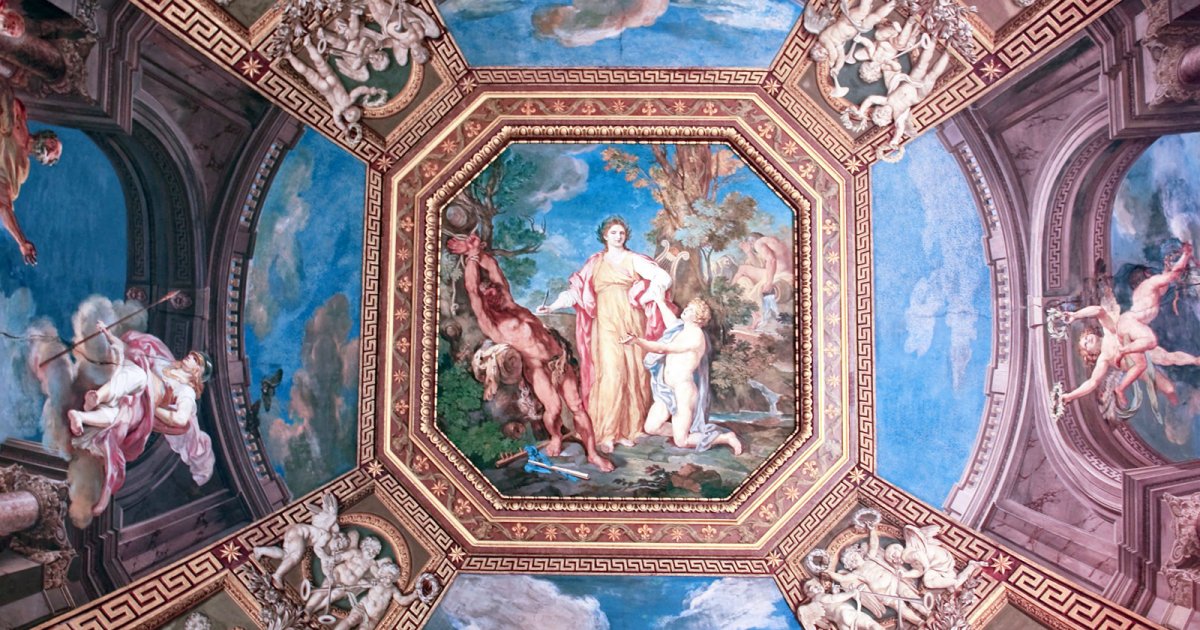VATICAN MUSEUMS, Frescoed Rooms
 Language: English / USA
Language: English / USA
Your itinerary through the Vatican Museums starts from the Chariot Room, where you can admire a real, reassembled Roman chariot. Afterwards you'll pass through some rooms with wonderful antique objects such as large candlesticks, floor mosaics, and sculptures that depict animals with extraordinary realism, then you'll pass through two long corridors full of wonders. The first is the Gallery of Tapestries, which is richly decorated with different series of tapestries, mostly made by the Flemish from the 1400s to the 1600s. I'd especially like to point out the tapestries with the scenes from the life of Christ that were made in Belgium based on Raphael's pupils' drawings. Then get ready for the marvelous Gallery of Maps: 120 meters long, it was created by the painter Antonio Danti, who took advantage of help from his brother Ignazio, a geographer and scientist. Painted at the end of the sixteenth century, you'll go down the hall like someone traveling from the south to the north of Italy: on the right you can see the maps of the Adriatic Sea and to the left those of the Tyrrhenian, with remarkable scientific accuracy but also brilliant decorative taste in blue and green shades.
At the end of the Gallery you'll reach the Niccoline Chapel, frescoed by Fra Angelico in the mid-1400s: this is the oldest part of the Vatican Palaces. The walls depict episodes of the life of the saints Stephen and Lawrence, set within beautifully painted architectures.
Following the indications, you can continue on to the Borgia Apartments and their six frescoed rooms very close to the Sistine Chapel. The ambitious and controversial Pope Alexander VI Borgia lived here, who did not hesitate to resort to ruthless methods to increase his power, using it to promote his daughter's strategic marriages and the territorial conquests of his son Cesare. The apartment was sumptuously frescoed in the last years of the 1400s by the Umbrian painter Bernardo Pinturicchio, with scenes overflowing with characters and gilding.
FUN FACT: you might notice the repeated use of a coat of arms with a red bull in the Borgia Apartments, which is the emblem of the family of Spanish origin, but it also references a figure of Egyptian mythology. And in fact, unexpectedly for a pope, the most lavish room of the apartment depicts scenes that are inspired precisely by... ancient Egyptian mythology!
The vault of the Hall of the Saints is in fact dedicated to the story of Isis and Osiris from their marriage to up the god's tragic end, who is killed and dismembered but then reappears in the form of the Api ox, which prefigures the Borgia bull.



